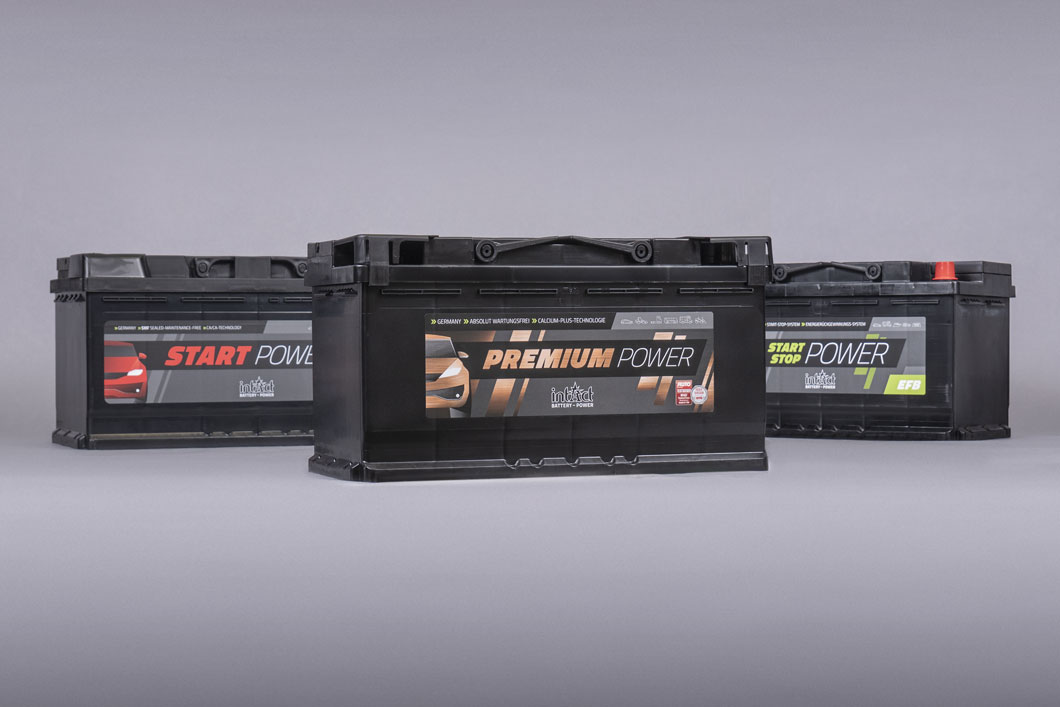Flooded batteries: Inexpensive & reliable


When you think of flooded batteries, do you think of outdated technology and the constant refilling of acid? Far from it! Wet batteries are still a powerful and reliable option for many applications today. In this blog post, you will find out everything you need to know about wet batteries, from their technical basics to their advantages and the various areas of application. Find out what else this proven technology has to offer!
You can also watch the corresponding video here:

Wet batteries, also known as liquid batteries, are the oldest and probably best-known form of lead-acid batteries. They form the basis for all further developments in this area, such as AGM and GEL batteries.
The basic principle is simple and effective: a robust housing contains lead plates coated with positive and negative material. These plates are immersed in a liquid electrolyte, usually diluted sulphuric acid. The chemical reaction between the plates and the electrolyte generates electrical energy.
Unlike AGM and GEL batteries, wet batteries are not maintenance-free. This means that you have to check the fluid level at regular intervals and top up with distilled water if necessary. Wet batteries are also more susceptible to gassing, i.e. they release gases during the charging process.
Our intAct Start-Power car starter battery has a double lid for increased leakage protection and gas condensation (gaseous electrolyte condenses in the labyrinth lid and remains in the circuit).



Despite further developments in battery technology, wet batteries still have a number of advantages that make them an attractive option:
Wet-cell batteries have been in use for over 150 years and have proven themselves in countless applications. They are robust, reliable and easy to handle.
Wet batteries are generally the cheapest option compared to AGM and GEL batteries. This makes them particularly interesting for price-sensitive applications.
Wet batteries can be charged with simple chargers and are not as sensitive to charging voltages as other battery types.
Although wet batteries need to be serviced, maintenance is relatively simple and can be carried out by anyone. Refilling with distilled water is uncomplicated and inexpensive.
Wet batteries are available in various designs and sizes and can therefore be adapted to different requirements.

Wet batteries are used in many different areas:
Wet batteries are the classic choice for starter batteries in cars, motorcycles and other vehicles. They supply the high starting current required to start the engine.
Wet batteries can also be used as supply batteries in motorhomes, boats or solar systems. Here they supply power for lighting, electronics and other consumers.
For motorhomes and boats, however, we recommend sealed, absolutely maintenance-free AGM, gel or lithium batteries.
Wet batteries are also used in industrial trucks, electric forklifts and other electrically powered vehicles. Here they supply the energy for the drive motor.

Wet batteries are versatile, but not the best choice for every application. Here are a few points you should bear in mind:
Classic wet batteries are not ideal for vehicles with start-stop systems, as they are not designed for the frequent charging and discharging cycles. AGM or EFB batteries are the better choice here.
AGM or GEL batteries are more suitable for applications with frequent charging and discharging cycles, such as in solar systems or electric wheelchairs, as they have a higher cycle stability.
Wet batteries should not be installed tilted or lying down, as acid can leak out.
The gassing of wet batteries can be problematic in closed rooms or in the vicinity of food.

There is a special variant of the wet-cell battery for vehicles with start-stop systems: the EFB battery (Enhanced Flooded Battery). EFB batteries are a further development of the classic wet-cell battery and are specially optimized for the requirements of start-stop systems. They have a higher cycle stability and can be charged faster than conventional wet batteries.

Wet batteries may be the oldest form of lead-acid battery, but they still have their place today. They are inexpensive, reliable and easy to handle. They are a good choice for many applications, such as starter batteries in vehicles without a start-stop system.